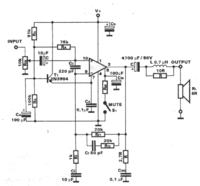just ... what is the difference between mass and minus in electronics, it has always interested me and I have never found a specific and accurate answer anywhere
I know that if there is a "+" in the battery from which the current carriers (electrons) come out, they must flow through the receiver and drain somewhere, and I understand it - for this there is a minus in the batteries
if the tram runs on the 'hook' tracks, it slides along the line with voltage (which powers the tram's engine), the loads are discharged to the rails with a 'zero' charge, so there is a potential difference - then I also understand
but what about (for example) a bicycle dynamo? if I spin this toothed crap, I generate a voltage relatively quickly depending on the frequency of rotation, if I put the bulb to the output where "+" is generated without the discharge of the charge, the bulb will not light - then I put "-" to the metal dynamo housing which is "mass"
what exactly is this mass? or is it just a piece of a solid made of a guide? is it important what I take as the weight?
I know that if there is a "+" in the battery from which the current carriers (electrons) come out, they must flow through the receiver and drain somewhere, and I understand it - for this there is a minus in the batteries
if the tram runs on the 'hook' tracks, it slides along the line with voltage (which powers the tram's engine), the loads are discharged to the rails with a 'zero' charge, so there is a potential difference - then I also understand
but what about (for example) a bicycle dynamo? if I spin this toothed crap, I generate a voltage relatively quickly depending on the frequency of rotation, if I put the bulb to the output where "+" is generated without the discharge of the charge, the bulb will not light - then I put "-" to the metal dynamo housing which is "mass"
what exactly is this mass? or is it just a piece of a solid made of a guide? is it important what I take as the weight?



